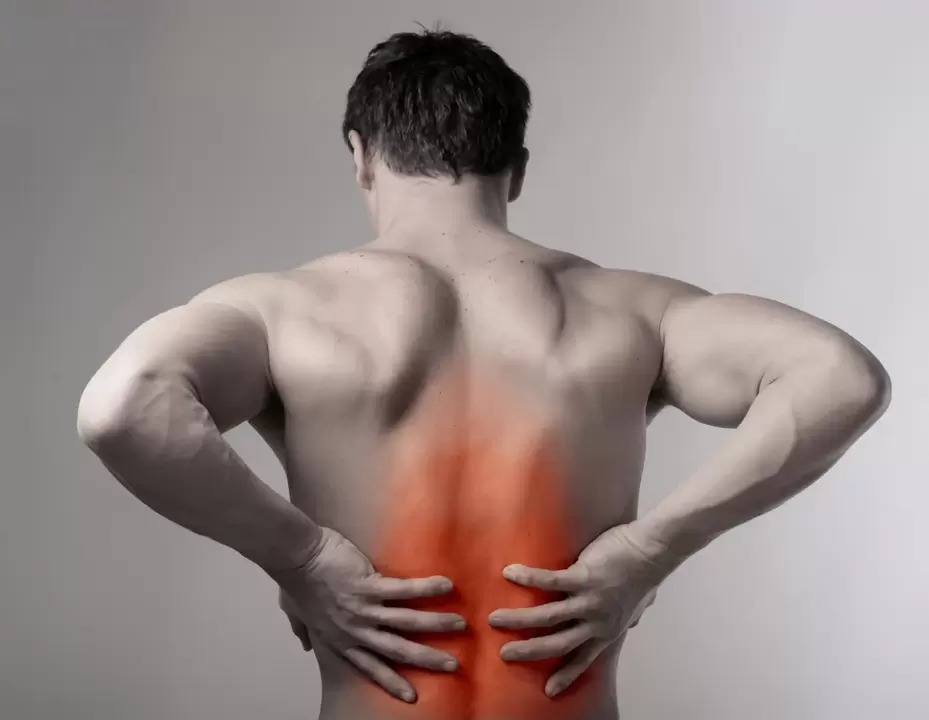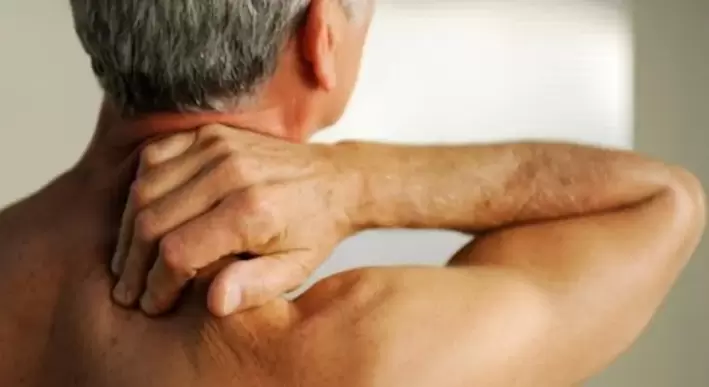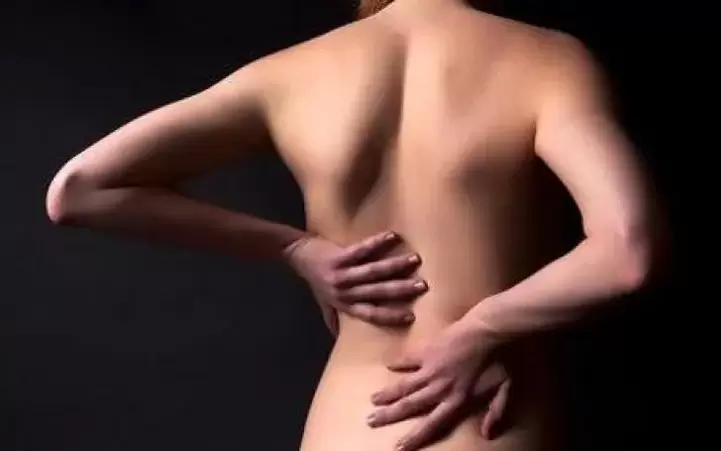
Osteochondrosis is a disease based on degenerative-dystrophic changes occurring in the discs, vertebrae and small joints of the spine. Osteoarthritis is a faithful companion of the elderly. But more and more young people are being diagnosed, mainly due to sedentary work, unhealthy lifestyles and less physical activity. We can safely assume that most of the adult population has signs of osteonecrosis.
The reasons
The elasticity of the spine, mobility and tolerance to physical activities, mainly depend on the state of the discs. The pathological process in osteonecrosis is based on undernutrition of the structures of the spine, especially the intervertebral discs. This leads to a change in the normal structure of the tissues, the disc loses its elasticity, its shape changes. Such metamorphosis leads to narrowing of the intervertebral discs and as a result compression of nerve roots. In fact, these changes explain the occurrence of neurological symptoms, namely back pain in osteonecrosis.
In the future, degenerative processes occur in the small joints of the spine, bones form on the surface of the vertebrae. All of these changes lead to decreased flexibility of the spine.
Similar changes in cartilage and bone tissues are the result of physiological aging of the body. But under the influence of a number of adverse factors, dystrophic changes in disc joints take place in the immediate future. These factors include:

- Fat;
- Sedentary lifestyle;
- Work hard;
- Jobs that are characterized by standing or sitting for long periods of time during working hours;
- Flat feet, valgus deformity of the foot;
- Spinal deformities;
- Autoimmune connective tissue diseases;
- Fluctuations in the hormonal background (pregnancy, menopause);
- Great sport;
- stress;
- Spinal trauma, etc. v.
Types of bone necrosis
Features of the clinical picture of the disease depend on the specific segment of the spine in which the pathological process arose.There are the following types of osteonecrosis:
- Cervical;
- Chest;
- Lumbar.
Cervical bone necrosis
Cervical osteosarcoma is common. The musculoskeletal skeleton of the neck is rather underdeveloped, therefore, against the background of osteonecrosis, even when subjected to an insignificant load, the vertebrae are displaced and, as a result, the vessels and nervesof the neck is compressed. This explains the specifics of the clinical picture in cervical osteonecrosis.
So, the main signs of cervical osteonecrosis include:
- Persistent pain in the neck and occipital region, aggravated by neck movement;
- Hemispheric pain - in one hemisphere;
- dizziness, tinnitus;
- Hand pain;
- Numbness and tingling sensation in the hand.
Thoracic bone tumor
Failure of thoracic osteonecrosis is quite rare. The main prerequisite for the development of the disease is the presence of spinal deformities.
Signs of thoracic osteonecrosis:
- Dull pain, pain in the chest, often low back pain;
- Pain increases when turning, sneezing, coughing, laughing;
- Visceral pain in the heart area, right hypogastric region, abdomen;
- Numbness, paresthesia of the chest skin.
Lumbar bone necrosis
The most common variant of osteonecrosis. This is probably because the greatest load falls directly on the lumbar region.Symptoms of lumbar osteonecrosis:
- Soreness, less often acute pain in the lower back, aggravated by movement or prolonged exposure to a static position;
- Stiff feeling in the lower back;
- To relieve pain, a person performs a forced pose;
- Aching or sharp pain (such as low back pain) in the buttocks, thighs, or legs;
- Tingling, paresthesia in the legs.
%20with%20lumbar%20osteonecrosis.webp)
Diagnosis of osteonecrosis
Radiation methods are used to detect osteonecrosis: X-ray, computer and magnetic resonance imaging of the spine. The most characteristic and important early sign of osteonecrosis is a decrease in the height of the disc space.
In the later stages of degeneration, marginal growth cells (osteocytes) appear on the surface of the vertebrae. They are easier to detect on lateral radiographs because the bone cells are located anterior and posterior to the vertebrae.
In addition, with osteonecrosis, the trunks of adjacent vertebrae are displaced, which can also be identified on radiographs.
Treatment of osteonecrosis
Treat osteonecrosis as effectively as possible. As mentioned, osteonecrosis is a structural change of discs and vertebrae. Unfortunately, many people ignore back pain for a long time and do not seek medical attention in time, missing the moment can still stop the pathological process.
Treatment of osteonecrosis is carried out with the help of drugs, physiotherapeutic exercises, massage, surgery.
Medical therapy:
- Non-steroidal anti-inflammatory drugs in the form of tablets, ointments, injections for pain relief;
- Muscle relaxants;
- Chondroprotectors - promote regeneration of affected cartilage;
- Complex of vitamins and minerals;
- Vasodilators;
- The drug normalizes tissue metabolism.
After eliminating the exacerbation of the disease, it is recommended to carry out rehabilitation. Therefore, physical therapy is a very important aspect in the fight against osteonecrosis. Performing certain exercises contributes to the formation of a muscular corset. This is extremely important, because thanks to the strong corset, the new physical load is evenly distributed along the spine. With regular exercise, stiffness in the spine disappears and range of motion increases. Massage, physical therapy, acupressure, spinal stretching will help enhance the effects of physical therapy exercises.
When complications appear in the form of herniated discs, sciatica, and if conservative treatment is unsuccessful, surgical intervention is required. The goal of surgical treatment is to remove compression on nerve roots and blood vessels, as well as stabilize the structure of the disc or vertebrae.
Treatment of osteonecrosis at home
Folk remedies will help relieve the symptoms of osteonecrosis, but in no case can they replace the main treatment. On the Internet you can find a large number of alternative treatments, but not all of them are safe, so consult your doctor.
Traditional medicine

The general principle of folk treatment of osteonecrosis is the use of substances with a stimulant effect. As a result, there is an improvement in the blood supply in certain areas of the body, as well as a reduction in pain.
In folk medicine, such a massage recipe is known: mix 0. 25 cups of vodka with 0. 5 cups of honey, add 0. 75 cups of grated radish and two tablespoons of salt. With the resulting mixture, you need to rub the disturbed area of \u200b\u200bthe back twice a day. The procedure must be repeated within a week.
To get rid of the pain, you can put a piece of potato on your back. Mashed raw potatoes must be mixed with honey in equal proportions. Then wrap the resulting mixture in gauze, attach to the back and wrap with a scarf. You can also use a burdock swab. To prepare, pour a cup of boiling water over a tablespoon of finely chopped burdock leaves. Wrap the mixture in gauze and apply on your back for half an hour. After removing the compression bandage, be sure to wrap your back with a warm towel.
You can do it even easier: grate the turnip, place it in a cotton sock, then lie on your back on top of it.
Note:It is important to be careful when using folk remedies, not to touch your face with your hands. Radishes and other plants, if it comes into contact with the eyes, can cause corneal burns.
Physical therapy
Physical exercises can only be done outside of the exacerbation time. During acute pain, you should limit exercise, as this will only increase the pain.
A set of example exercises might look like this:
- Lie on your back and straighten your legs. Pull the right toe towards you and the left toe away from you. This must be done in sequence.
- Lie on your back, place your hands behind your head. The legs should be brought together and bent at the knees. The knee should be tilted to the left, and the head should be turned in the opposite direction. Hold for a few seconds. Then move your knees to the right and your head to the left.
- Lie on your back, arms along your body. You need to bend your knees and raise your pelvis. Hold this position for a few seconds. As you exhale, lower your pelvis.
- Roll over to you. Straighten your upper leg and swing it back and forth.
- The position starts with four legs. Arch your back, hold this move for a few seconds, then arch your lower back.
- Roll into your back. Pull the bent left knee to the right elbow, and vice versa.

























